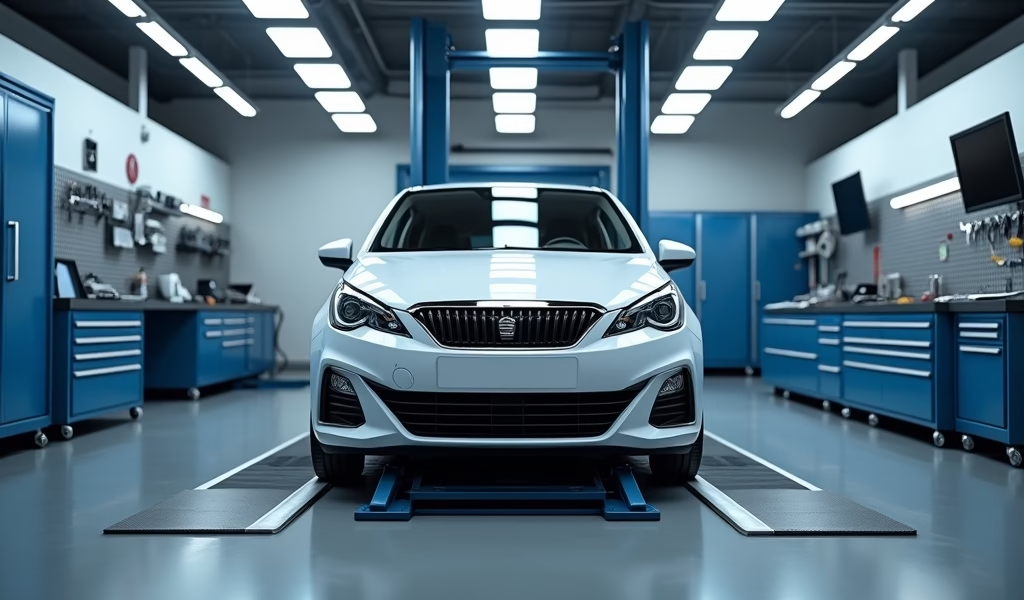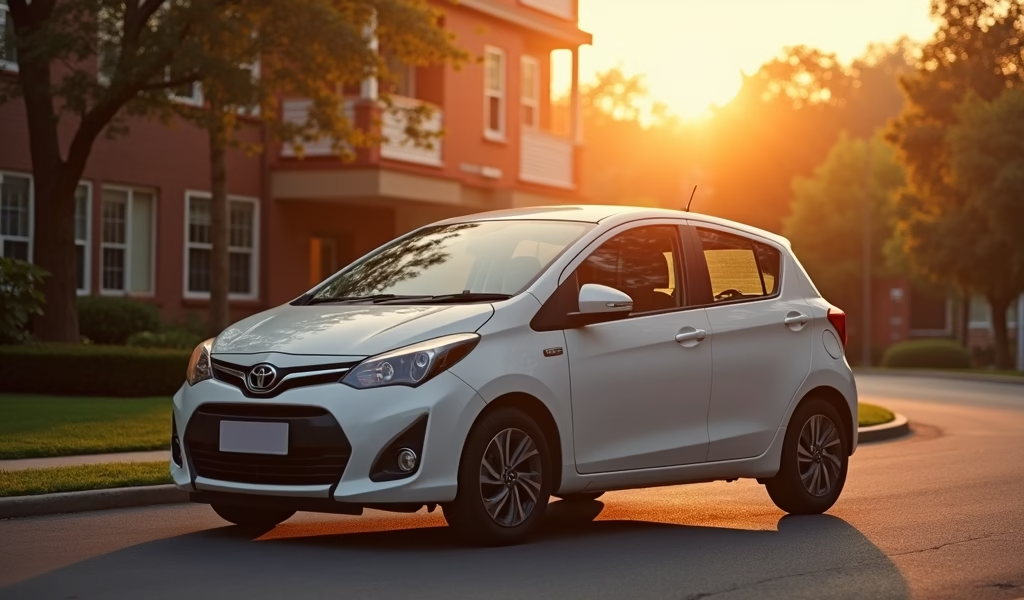Overview
This article provides strategies for young drivers to reduce car insurance costs, including staying on parents’ policies, choosing insurance-friendly vehicles, leveraging student discounts, using telematics programs, and building positive driving records. Insurance rates naturally decrease at ages 21, 25, and 30, so maintaining safe driving habits and regularly comparing quotes from companies like Progressive, State Farm, and Geico can lead to significant savings over time.
Table of Contents
- Why Insurance Costs More for Young Drivers
- Best Insurance Companies for Young Drivers
- Types of Coverage to Consider
- Discounts and Savings Opportunities
- Parent-Related Strategies
- Building a Positive Insurance History
- Comparing Quotes and Applications
- The Road Ahead: Long-term Outlook
- Conclusion
- Frequently Asked Questions
Let’s be real—getting your first car insurance quote as a young driver can feel like being punched in the wallet. I’ve seen the shock on countless young faces in my shop when they mention what they’re paying for insurance. Those rates can be more painful than the sound of a timing belt about to snap!
But don’t worry. After years in this industry, I’ve helped hundreds of young drivers find ways to make insurance more affordable without sacrificing necessary coverage. The road to cheap car insurance for young drivers has some twists and turns, but I’ll be your navigation system through this journey.
So buckle up! We’re about to dive into everything you need to know about finding the cheapest insurance for young drivers without getting taken for a ride.
Why Insurance Costs More for Young Drivers
Insurance companies aren’t trying to empty your bank account just for fun (though sometimes it sure feels that way). The truth is, they’re playing the odds based on cold, hard statistics.
According to the National Highway Traffic Safety Administration, drivers under 25 are involved in accidents at much higher rates than older drivers. In fact, teen drivers are nearly three times more likely to be in a fatal crash compared to more experienced motorists. These aren’t just numbers—they translate directly to risk, and risk is what insurance is all about.
Young drivers typically pay anywhere from $3,000 to $7,500 annually for full coverage—that’s roughly the cost of a decent engine rebuild! Once you hit the 22-25 age bracket, things improve somewhat, but you’re still looking at $2,000 to $4,000 per year on average.
Think of it this way: insurers see young drivers like I see a car with mismatched tires and a check engine light—a potential problem waiting to happen. But don’t lose hope! Just like I can fix that car, you can find ways to make your insurance more affordable.
Best Insurance Companies for Young Drivers

Not all insurance companies treat young drivers with the same heavy hand. Some have recognized this demographic as an opportunity to build customer loyalty and have developed more competitive offerings. After helping countless young drivers through my shop, I’ve seen patterns in which companies tend to offer better deals.
Here’s my breakdown of top contenders for young drivers:
Progressive
Progressive frequently offers competitive rates for the younger crowd. Their Snapshot program rewards safe driving habits with real discounts—kind of like how proper maintenance extends your car’s life. Many of my younger customers have saved 10-15% through this program alone.
State Farm
Known for substantial student discounts (up to 25%) and their Steer Clear program specifically designed for drivers under 25. If you’re hitting the books while hitting the road, State Farm might give you the best mileage for your money.
Geico
Generally offers lower base rates for many drivers and provides discounts for students with good grades. Their user-friendly app makes managing your policy as easy as checking your oil level.
Liberty Mutual
Their RightTrack program can lead to significant savings, and they offer specific discounts for recent graduates. Think of it as a graduation gift that keeps on giving.
USAA
If you’re eligible (military families only), USAA typically offers excellent rates for young drivers. Their customer service runs as smoothly as a well-tuned engine.
Nationwide
Their SmartRide program rewards safe driving, and they offer accident forgiveness which can be valuable for inexperienced drivers who might make a mistake or two.
Allstate
Their Drivewise program and Smart Student Discount can help offset the high costs for younger drivers. They’re particularly competitive if you’re bundling with other policies.
Many of these companies use telematics devices (those little gadgets that plug into your OBD-II port) to monitor driving habits. Drive like you’re taking your road test every day, and you could see your premium drop by 10-20%. Not a bad return on good behavior!
Types of Coverage to Consider
When budgets are tight, it’s tempting to cut corners on coverage. But as someone who’s seen the aftermath of accidents in my shop, I can tell you that skimping on insurance is like using duct tape instead of replacing a broken timing belt—it might seem cheaper now, but it’ll cost you big later.
Most states require liability insurance at minimum, which covers damages you cause to other vehicles and people. However, this leaves your own vehicle unprotected. It’s like having a great offense but no defense in a football game.
For young drivers with newer cars, I strongly recommend comprehensive and collision coverage despite the higher cost. I’ve seen too many devastated faces when someone realizes their car loan is still due even though their car is totaled and they had no collision coverage.
If you’re driving an older vehicle worth less than about $4,000, liability-only coverage might make sense. Do the math: if your full coverage costs $2,000 per year for a car worth $3,500, you’re essentially buying your car back every two years through insurance premiums.
A smart middle ground? Select higher deductibles ($1,000 instead of $500) to lower monthly premiums while maintaining essential protection. It’s like choosing to handle minor repairs yourself while having coverage for the big stuff.
Discounts and Savings Opportunities
Insurance companies offer more discounts than a parts store during a clearance sale. Here are the ones you should be asking about:
Good Student Discounts
Maintaining a B average or better can translate to savings of 10-15%. Your hard work in school pays off at the insurance office too.
Defensive Driving Courses
These courses typically cost $50-100 but can reduce premiums by 5-10%. That’s an investment that pays for itself faster than a fuel-efficiency upgrade.
Usage-Based Insurance
Programs like Progressive’s Snapshot or State Farm’s Drive Safe & Save track your driving habits. Safe drivers can see discounts of up to 30%. Every gentle brake and proper speed maintenance puts money back in your pocket.
Vehicle Choice Matters
That sporty coupe might turn heads, but it’ll also turn your premium skyward. Cars with excellent safety ratings and lower theft rates can significantly reduce insurance costs. Those family sedans might not be exciting, but they’re like the reliable tools in my toolbox—they get the job done without drama or extra expense.
Speaking of vehicle choice, I’ve helped many young drivers find cheaper car insurance as new drivers by steering them toward more insurance-friendly vehicles. Something like a Toyota Corolla or Honda Civic with good safety ratings will treat both you and your insurance premium better than that tempting Mustang or WRX.
Multi-Policy Discounts
If you’re also insuring a renter’s policy, bundling can save 5-10% across your policies. It’s like buying parts in bulk—the per-unit cost goes down.
Parent-Related Strategies

For many young drivers, particularly teens and college students, leveraging parents’ insurance history can be more effective than the best performance upgrade. Here’s how to maximize this advantage:
Being Added to Parents’ Policies
Remaining on a family policy typically costs significantly less than obtaining individual coverage. I’ve seen differences as high as 50-60% in many cases. It’s like drafting behind a larger vehicle—you benefit from their established history.
Named Driver Discounts
Some insurers offer discounts when a young driver is specifically named on a parent’s policy while maintaining certain restrictions. These might limit when and where you can drive, but the savings can be substantial.
Family Fleet Discounts
Insuring multiple vehicles on the same policy often results in per-vehicle discounts that increase with each additional car. It’s similar to how buying shop supplies in bulk saves me money that I can pass on to my customers.
Just remember that any accidents will affect the family policy, potentially raising rates for everyone. Drive like your parents’ premium depends on it—because it does!
Building a Positive Insurance History
Insurance is a long game, like properly maintaining a vehicle over its lifetime. Building a positive history starts from day one:
Maintain continuous coverage without gaps. Insurers see coverage lapses like I see irregular oil changes—a red flag that often leads to bigger problems (and costs) down the road.
Drive responsibly and defensively. Every ticket and accident can haunt your insurance record for 3-5 years. That speeding ticket might seem like a minor annoyance, but it’s actually an expensive lesson that keeps charging you term after term.
Build credit early and wisely. In most states, insurers use credit scores as a factor in determining premiums. Studies have shown a correlation between credit history and insurance claims, so maintaining good credit can significantly impact your rates.
Consider accepting a higher deductible if you have some savings. If you can afford a $1,000 out-of-pocket expense in case of an accident (instead of $500), raising your deductible can substantially lower your premium. It’s like being willing to handle minor repairs yourself instead of bringing every little issue to the shop.
Finding affordable coverage gets easier as you build a history of responsible driving. Like a well-maintained engine that runs better with age, your insurance profile improves over time—as long as you treat it right.
Comparing Quotes and Applications
Shopping for insurance should be approached like diagnosing a complex car problem—systematically and thoroughly. Here’s my step-by-step process:
1. Gather Your Information First
Have your driver’s license, vehicle information (including VIN), and driving history ready before requesting quotes. Being prepared saves time and ensures accurate comparisons.
2. Use Multiple Comparison Tools
Sites like The Zebra, Compare.com, and Insurify allow you to compare multiple quotes simultaneously. However, some insurers (like USAA) aren’t included on these platforms, so don’t stop your search there.
3. Call Directly
After online research, call several companies directly. Just like how I sometimes find problems that a computer diagnostic missed, insurance agents can often find additional discounts that automated systems overlook.
4. Ask Specific Questions
- What discounts am I eligible for?
- How will my premium change at my next birthday?
- Do you offer usage-based programs?
- What multi-policy options are available?
- Are there occupational discounts?
5. Reassess Every Six Months
Insurance pricing algorithms change frequently. What was the best deal last year might not be competitive now. It’s like how I check and adjust your car’s maintenance schedule based on how you actually use it—conditions change, and so should your approach.
For new drivers seeking affordable insurance, this comparison process is even more critical. Don’t just take the first quote you get—shop around like you’re looking for the perfect set of performance tires.
The Road Ahead: Long-term Outlook
Here’s the good news: insurance premiums naturally decrease with age and experience (assuming a clean driving record). Most drivers see significant drops at ages 21, 25, and 30.
Think of it like breaking in a new engine—things run more smoothly and efficiently after those first few thousand miles. Your first few years of driving history establish your reliability in the eyes of insurers.
In the meantime, focus on building a positive driving history, maintaining good academic performance if applicable, and shopping around regularly. These habits will help minimize costs during these expensive early years.
Remember that every year of safe driving is banking goodwill with insurance companies. Each renewal without incidents is like completing regular maintenance on time—it builds confidence in your reliability and reduces your risk profile.
Conclusion
Finding the cheapest insurance for young drivers is a lot like maintaining a car properly—it takes attention, care, and sometimes a bit of expert advice. The strategies we’ve covered—from leveraging parental policies to choosing the right vehicle and embracing telematics programs—can significantly reduce your insurance costs during those expensive early years.
Remember that insurance is a marathon, not a sprint. Building a solid foundation of safe driving habits and smart insurance choices now will pay dividends for decades to come. Just as I advise my customers to invest in preventative maintenance to avoid costly repairs later, I encourage young drivers to invest time in finding the right insurance strategy now.
Keep driving safely, maintain your vehicle properly, and revisit your insurance options regularly. Your premiums, like your driving skills, will improve with time and attention.
Frequently Asked Questions
What’s the single best way for a young driver to reduce insurance costs?
Staying on a parent’s policy typically offers the largest immediate savings. This arrangement can reduce costs by 50-60% compared to individual coverage for young drivers.
Does the type of car really make that much difference in insurance rates?
Absolutely—choosing a vehicle with strong safety ratings and low theft rates can save hundreds of dollars annually. Sports cars and luxury vehicles typically cost 30-50% more to insure than family sedans or small SUVs.
How much can good grades really save on insurance?
Good student discounts typically range from 10-25% depending on the insurer. Maintaining a B average or better can save hundreds of dollars annually on your premium.
At what age do insurance rates typically start to decrease?
Most drivers see their first significant rate decrease at age 21, with another substantial drop at 25. Assuming a clean driving record, rates generally continue improving through age 30.
Are usage-based insurance programs worth the privacy trade-off?
For most young drivers, the potential 10-30% savings make telematics programs worthwhile. These programs primarily track hard braking, rapid acceleration, and speeding—all behaviors you should avoid anyway for safety reasons.


Pingback: Cheap Insurance for Young Drivers Review - knowsyourcar.com